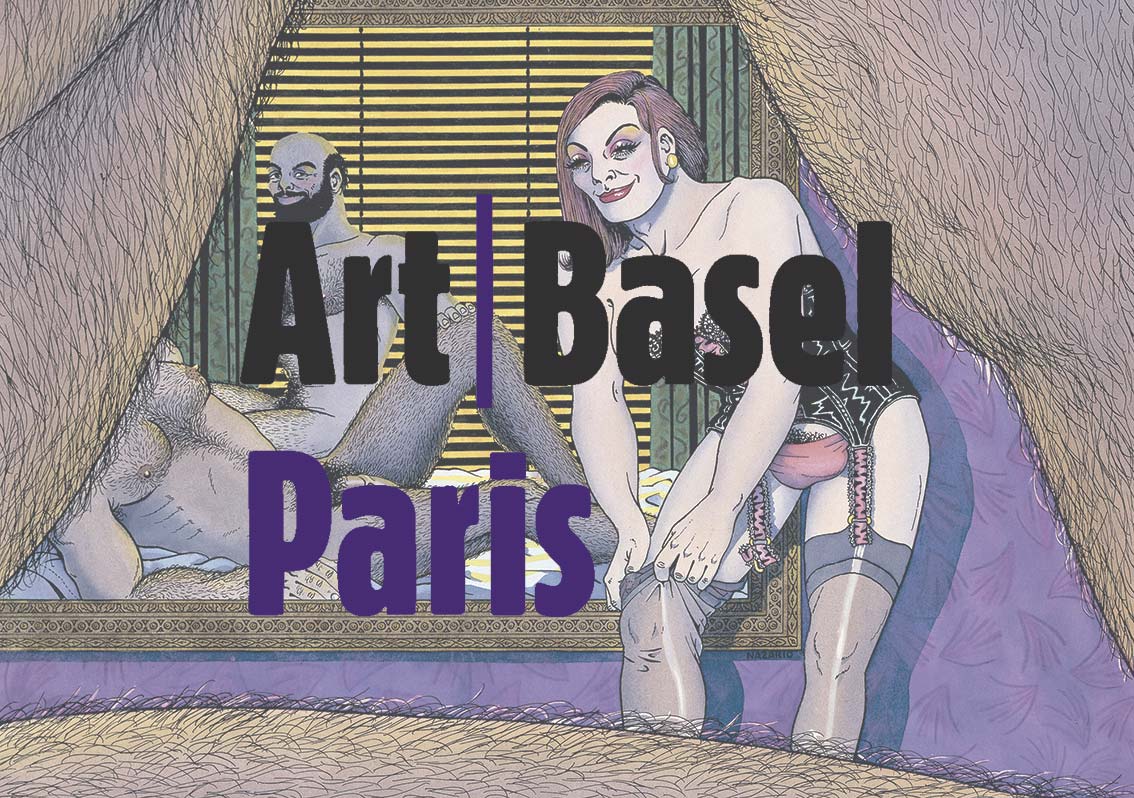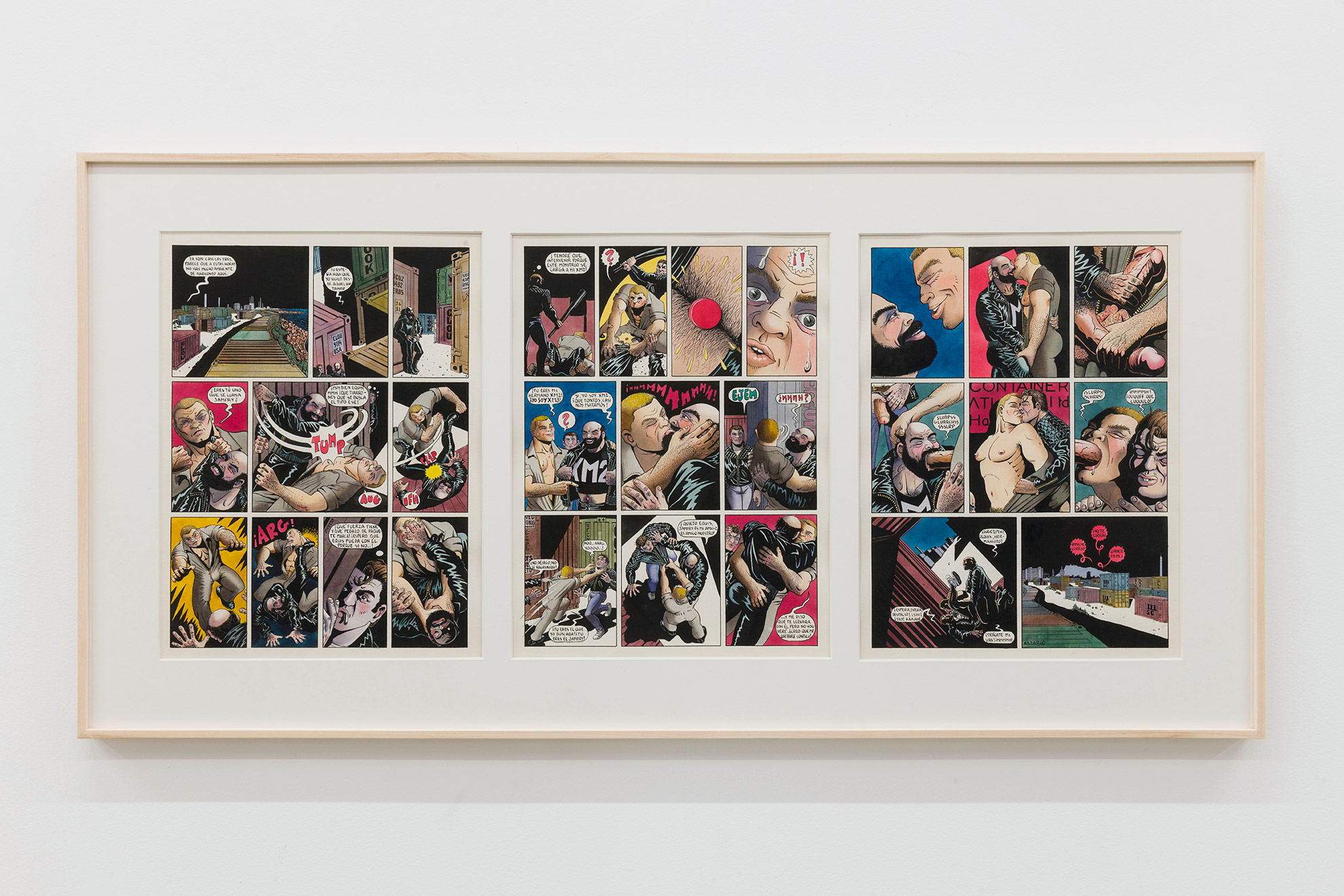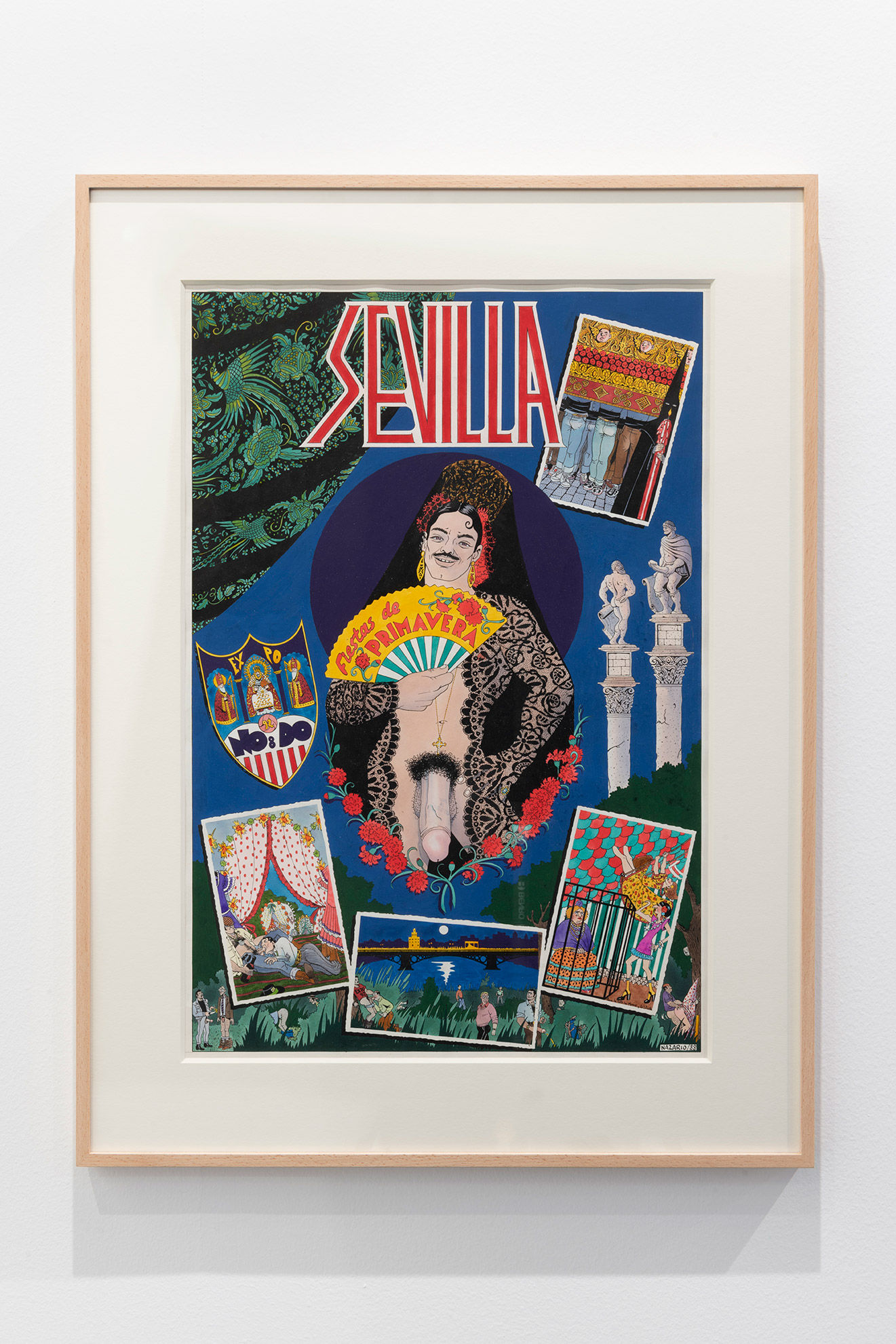16 October – 20 October 2024
Paris













know more about
For the Premise section of Art Basel Paris we are pleased to present a solo project by Nazario (Seville, 1944) —a pioneer of underground culture in Spain— consisting of a selection of original drawings from his most iconic comic Anarcoma.
Nazario Luque (Seville, 1944), is considered one of the most outstanding representatives of the Spanish counterculture of the 70s and 80’s. A versatile artist with an extensive career, he has also developed other facets around painting, photography and writing.
Anarcoma —in addition to a radical, raw, daring, unusual and provocative homoerotic comic— is a key piece in the history of art of Spain and a historical document of the underground Barcelona, as well as one of the first movements that claimed LGTB+ rights in a society in full transformation. Its protagonist, with the same name, is a transvestite heroine living in the Raval of Barcelona who entered the mostly heterosexual universe of the late 70s-early 80s comic, thus becoming a non-normative reference for an entire generation.
Its first 6 pages were published in 1978, but it wasn’t until 1979 that it secured a monthly publication in the new underground comics magazine El Víbora. Anarcoma was also published in Sweden, Germany, Italy, France, the United States and Brazil.
Anarcoma was born in the midst of a democratic transition, before the eyes of a country in turmoil, and when freedom was advancing with machetes. Nazario knew what he was doing; he was very clear about the intention of the character, the attitude he wanted to give her and the name he used (Anar- comes from anarchy and -coma from carcoma, which means woodworm in Spanish). Anarcoma is a hopeless romantic who can be nasty when needed, but never abandoning her chores and obligations. What his creator was perhaps not so aware of is that he was allowing a transvestite heroine to enter a heterosexual universe: when before had a detective been seen halfway between Lauren Bacall and Humphrey Bogart? Nazario established a referent in Spain that did not previously exist.
Like Valeria Vegas —Spanish writer and a trans icon— notes, the point is that, whether through long-term adventures or short comics interspersed in different issues of El Víbora, his author managed to make such a character reach an audience that knew nothing about transsexuality and that granted their approval. The spider web of what we now call queer stretched out in a polyhedral way. And Nazario, without intending to, did his bit, with the double merit of going beyond preaching to the convinced and getting his work fall into hands that were not limited to the LGTB+ community.
